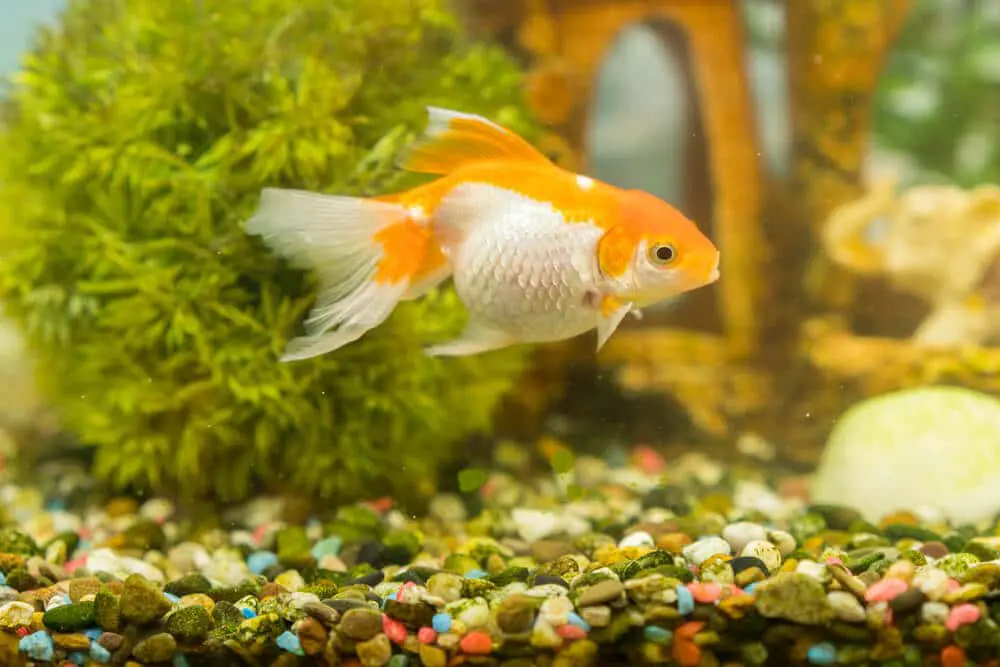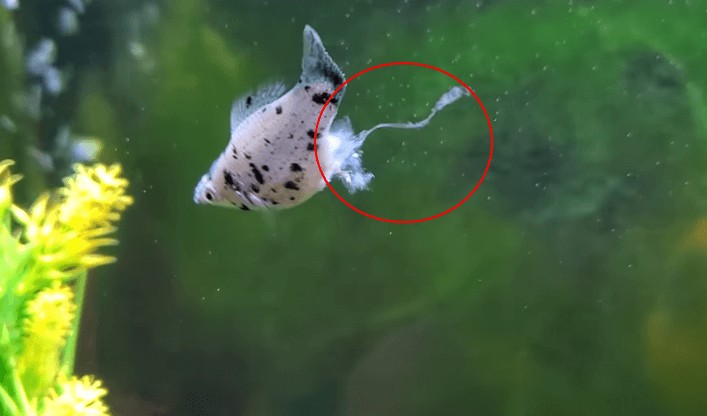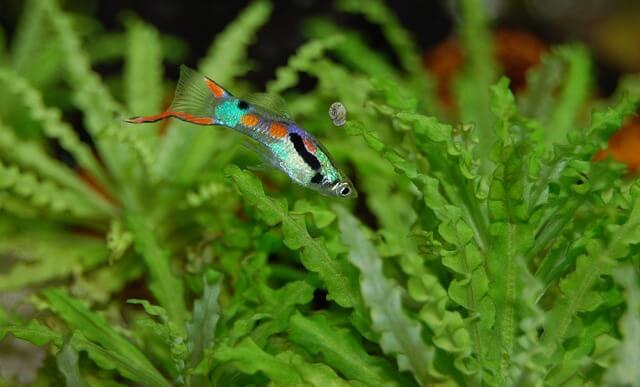Is an air pump necessary for your aquarium? The local fish store has dozens of tanks with air pumps. Your fish hobby friends swear they don’t need an air pump. Who is doing the best for their fish?
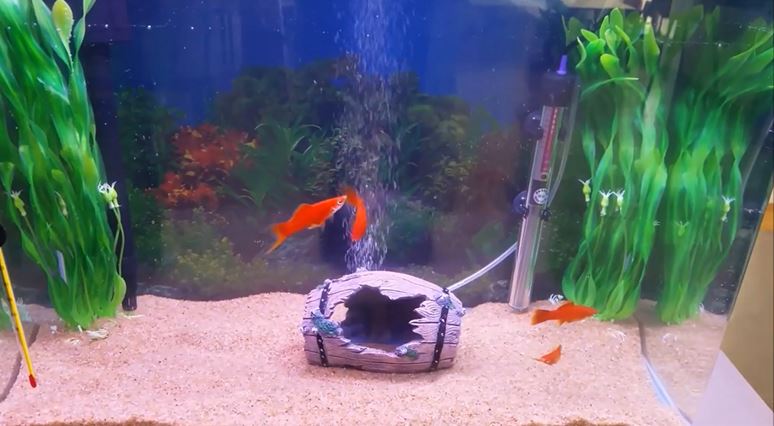
How long can fish survive without an air pump? We’ll show you this answer. We’ll also give you some great information about air pumps, air stones, and how to use them to help your tank.
Contents
How Long Can Fish Survive Without an Air Pump?
The good news is fish can survive forever without an air pump. Duke University points out air pumps are not required for aquariums. A bunch of different factors determine the oxygen levels in water.
A short answer is something like this:
Fish can survive about two days without an air pump in completely still water. However, with the right kind of filter producing lots of surface water movement, an air stone may not be required at all.
How do I know if my fish need more oxygen?
They’ll show you. Here are a few signs of fish needing more oxygen:
- Their gills move faster than normal.
- They gulp air at the top of the tank.
- Long periods of rest could indicate fish without enough oxygen to be active.
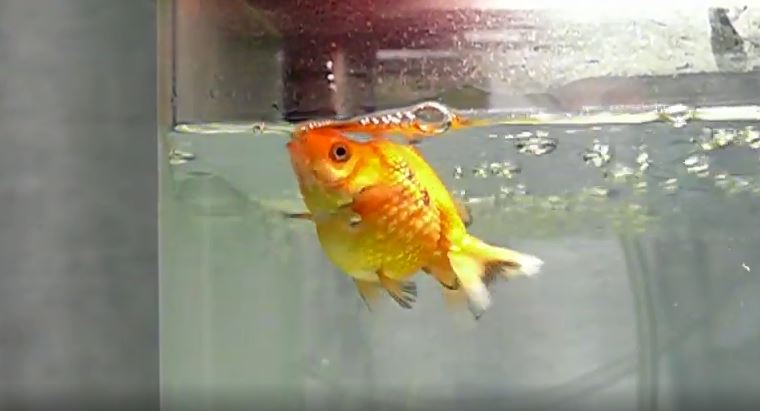
Pay attention to your aquatic friends and they will show you if they need your help.
Now you know the short answer. There is so much useful info about air pumps and air stones. These can be the fish keeper’s ultimate weapon.
Intro to Air Pumps
Here’s the short, sweet summary of everything we’re about to explain:
Air pumps and stones add oxygen to your tank’s water and increase its circulation. Moving water with high levels of oxygen makes fish healthier, prevents dead zones where algae build up, and extra oxygen increases fish energy levels.
Aquarium air pumps help keep fish alive for longer than two days.
By the way, when we say air stones, we are including air pumps as part of the package because every air stone needs an air pump.
Why Air Stones Are Necessary
Air stones add oxygen to the water in your tank. Fish, like most other animals, need oxygen to survive. Air pumps can add necessary oxygen to the water.
Let’s be clear about how this works, though.
Adding oxygen to the water isn’t as simple as making a few bubbles. What is needed is something called a gas exchange. This only happens at the surface of the tank.
As the water at the surface of the tank touches the air, the levels of gases in the water, especially oxygen and carbon dioxide, change to match what is in the air. All you need is for the water to touch the air.
However, still water doesn’t really exchange much gas with air. Moving water is much better at gas exchange. That’s why aquarium air pumps and filters can be used to help with gas exchange.
Fish Health
The main reason to use an aquarium air stone is for the health of your fish. Fish need high-quality water to be healthy. Water without enough oxygen will kill them by suffocation. As fish breathe, oxygen in the water is picked up by their gills and used to keep them healthy and active.
Water Circulation
Most fish keepers know about ammonia, nitrites, and nitrates. If these are new to you, then check out our article here. What might be less clear is why managing these chemicals is vital to your tank. The obvious reason is they are poisonous to fish. There is a less obvious reason, though.
Areas where water does not circulate and remove ammonia and waste can become dead zones. These dead zones are very low in oxygen and can be found in nature on a vast scale. They can also be found in your fish tank on a much smaller scale. The primary cause of aquarium dead zones is poor circulation around the edges, bottom, and corners of fish tanks.
Air stones and bubblers help move water from the bottom of the tank to the top of tank. The bubbles they add are great at increasing the level of gas exchange at the surface.
Now you can see why aquarium air stones are your ultimate weapon. They do more than one thing for you. There are a few different kinds, though.
Different Types of Air Stone
Adding air into your fish tank happens in one of two ways. You can use an air stone or a decoration to add bubbles. Either way is fine, but air stones are probably the better choice.
Solid, Natural Materials
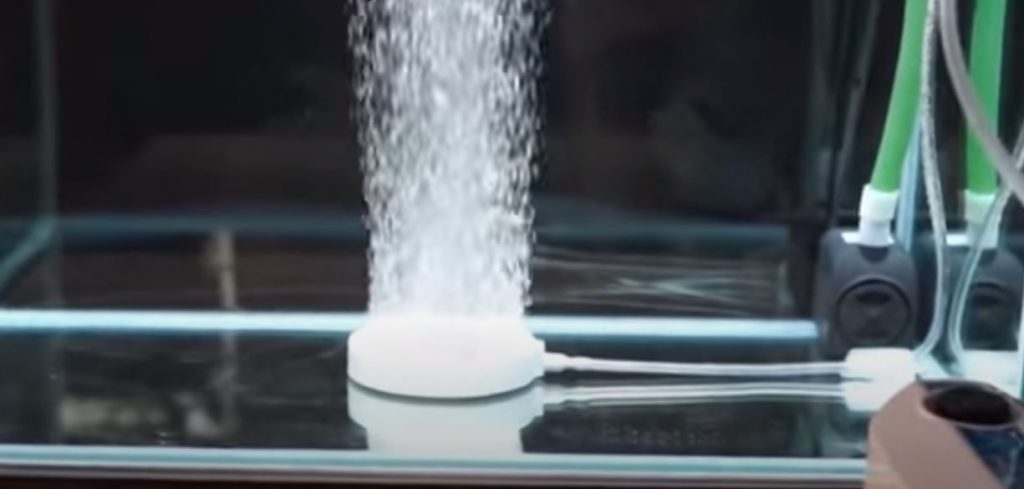
Most air stones are made from some form of porous material. Ceramic has been used widely. Volcanic rock and manufactured glass are also great choices. More recently, air stones have been made from different kinds of wood. Lime wood is the most common species of wood used this way.
Air stones made from heavier materials are a little easier to manage because they stay in place at the bottom of the tank. Bubble curtains, made from long air stones, can be used as well. These come with suction cups to attach them to the walls of the tank wherever they are needed.
There is another choice for water circulation and aeration in your tank and it’s a little more fun.
Decorations
Remember those kitschy decorations in restaurant fish tanks? Those are super useful. They can be used in the same way an air stone is used. Oxygen is pumped into the little clamshell. Once the shell is full of air, then it opens and all the air rushes to the surface of the water.
These whimsical decorations do the same thing as air stones. They are not as efficient, and they don’t cover as much space. However, they can add more visual interest to your tank, especially for kids.
So now you know you need an aquarium air pump and air stone. What happens if they stop working? Will your fish die?
Backups in Case of Air Pump Failure
Equipment failures, and other problems can cause a lot of concern for fish keepers. What will you do if your air pump stops working?
Gas exchange happens at the surface of your aquarium. Your filter can be used to disturb the water surface to help gas exchange. To do this, make sure the output of your filter is directed to move the water surface.
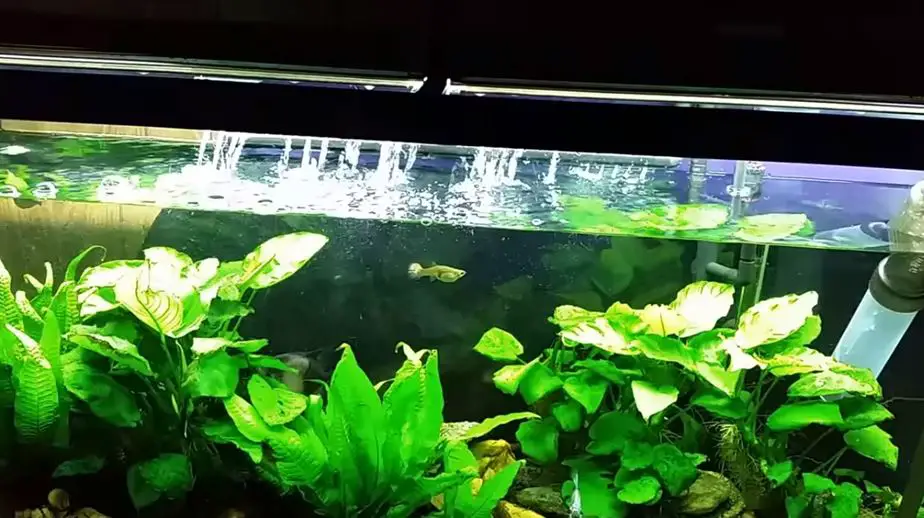
Another option is to use a venturi to add air into the water as it passes out of your filter. These can be a little noisy, though.
Finally, external filters can have built-in options to increase aeration. Wet/dry filters incorporate aeration into their design. Sumps can have water mixing chambers to accomplish the same result.
>> To learn more about aquarium filter types, consult this article.
Therefore, an aquarium air stone can be a bonus for your fish health and tank hygiene. If it stops working, though, you don’t necessarily have an immediate emergency.
Common Questions
People have lots of questions about air pumps and air stones. We’ve made a short list of the most common questions. Our answers should help you decide what to do in your tank.
How do I check the oxygen level in my fish tank?
You can use a portable dissolved oxygen meter, or you can buy test kit for O2. The former is probably more accurate. The latter is cheaper.
>> Click on the link below to view more detail about these products:
Portable Dissolved Oxygen Meter and Oxygen Test Kit
Are air stones good for fish tanks?
Yes! They increase water circulation and enhance fish health. There are no reasons not to include some form of air stone or air pump in your fish tank. If your tank is big enough to have an external filter or sump filter, then the air stone can be located outside the tank. Some of its benefits may be lost, though.
>> Check out Hygger quiet mini air pump for 1-15 Gallon Fish Tank

What does an air stone do in a fish tank?
The air stone adds air to the bottom of the fish tank. This air rises, which causes more water circulation. As the air breaks the surface, gas exchange happens. The result is increased oxygen in the water. Air stones also add visual interest to tanks.
Where should the air stone be in a fish tank?
It depends on the air stone. Some circular air stones can be placed in the middle of the tank or even near the front because they provide an attractive point of interest. Other air stones are intended as bubble curtains. These are usually placed along the back wall of the tank.
How long do air stones last?
They last forever! Well, maybe that’s a small exaggeration. However, air stones can be cleaned if they become clogged. A small needle can also be used to poke holes in a clogged air stone and return it to use.
Can fish sleep with the air pump on?
Properly speaking, fish don’t really sleep but they do rest. Air stones shouldn’t disturb any fish. The only exception would be some combination of air stone and filter that creates too much flow in the tank.
How long should you run an air pump in a fish tank?
You can run your air pump continuously without any trouble. The only thing to be mindful of is how air pumps interact with live plants. During the day, live plants take in CO2 and release O2. At night, the reverse happens. This means you might want to avoid running your air pump during the day if your water has plenty of oxygen but not enough carbon dioxide. Likewise, if your tank has too much CO2 every morning, then you might want to run the air pump overnight.
Summary
We hope this post answers lots of your questions about aquarium air pumps and aquarium air stones. These are the fish keeper’s ultimate weapon. A few bubbles can do many things for your tank. Install one this week and start reaping the benefits.
